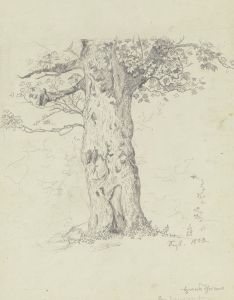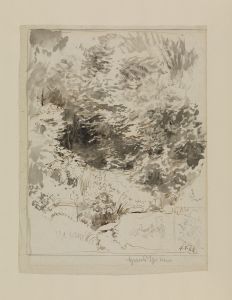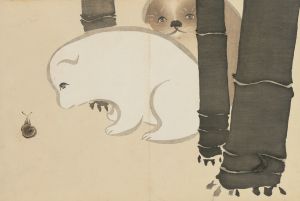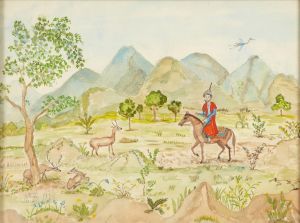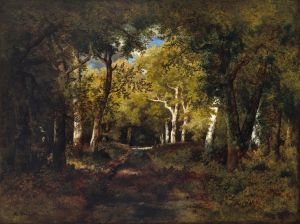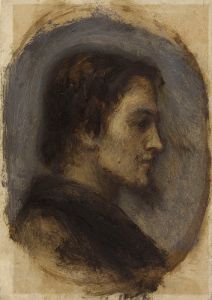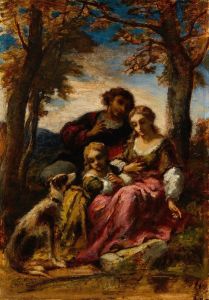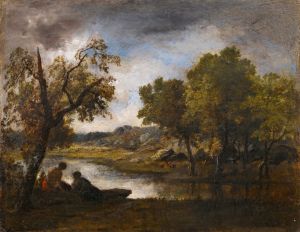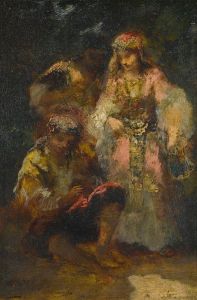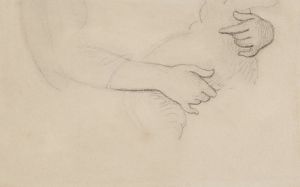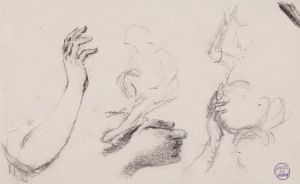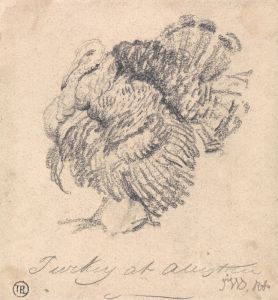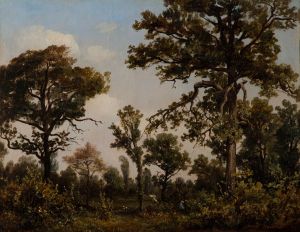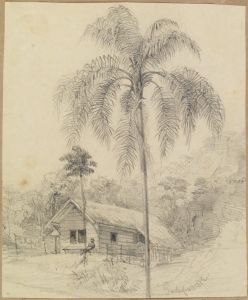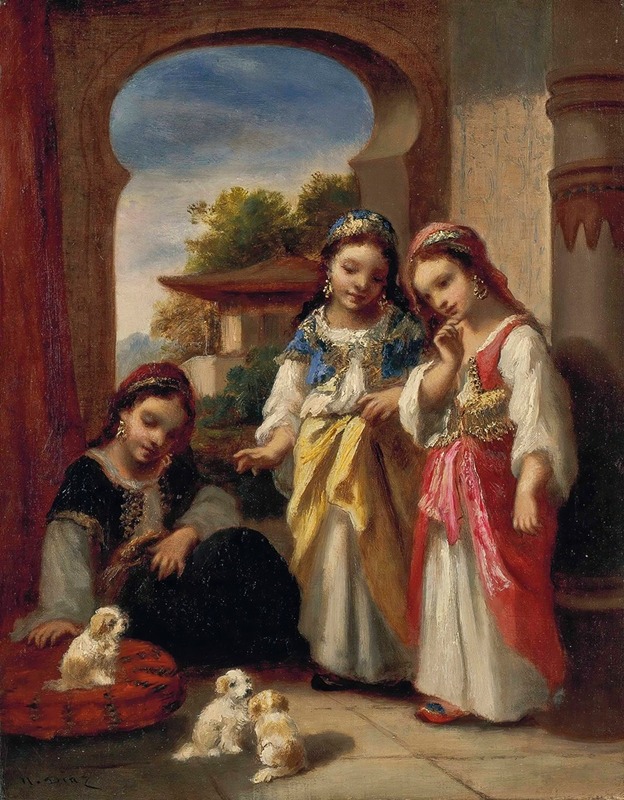
Trois fillettes et trois chiots en Turquie
A hand-painted replica of Narcisse-Virgile Diaz de La Peña’s masterpiece Trois fillettes et trois chiots en Turquie, meticulously crafted by professional artists to capture the true essence of the original. Each piece is created with museum-quality canvas and rare mineral pigments, carefully painted by experienced artists with delicate brushstrokes and rich, layered colors to perfectly recreate the texture of the original artwork. Unlike machine-printed reproductions, this hand-painted version brings the painting to life, infused with the artist’s emotions and skill in every stroke. Whether for personal collection or home decoration, it instantly elevates the artistic atmosphere of any space.
Narcisse-Virgile Diaz de La Peña was a prominent 19th-century French painter associated with the Barbizon School, a movement that emphasized naturalism and the depiction of landscapes. While Diaz de La Peña is well-known for his landscapes and woodland scenes, he also produced a number of genre paintings that capture intimate and everyday moments. One such painting is "Trois fillettes et trois chiots en Turquie" (Three Little Girls and Three Puppies in Turkey).
Unfortunately, there is limited specific information available about the painting "Trois fillettes et trois chiots en Turquie." The title suggests a scene featuring three young girls and three puppies set in Turkey, which may reflect Diaz de La Peña's interest in exotic and Orientalist themes, a common fascination among European artists of the 19th century. Orientalism in art refers to the depiction of Eastern cultures, often romanticized and imagined through a Western lens. Diaz de La Peña, like many of his contemporaries, might have been inspired by the allure of distant lands and cultures, which were often depicted with a sense of romanticism and fantasy.
Diaz de La Peña was born in Bordeaux, France, in 1807 to Spanish parents. His family moved to Paris when he was a child, and he later became a student of the painter François Souchon. Diaz de La Peña's career began in the decorative arts, but he soon transitioned to painting. He became associated with the Barbizon School, a group of artists who settled in the village of Barbizon near the Forest of Fontainebleau. This group, which included artists like Théodore Rousseau and Jean-François Millet, sought to break away from the formalism of academic art and instead focused on painting en plein air (outdoors) to capture the natural world with authenticity and immediacy.
Diaz de La Peña's work is characterized by its vibrant use of color and expressive brushwork. He often depicted forest interiors, nymphs, and mythological scenes, but he also had a talent for capturing the charm of everyday life, as suggested by the subject of "Trois fillettes et trois chiots en Turquie." His ability to convey warmth and emotion through his paintings made him a popular and successful artist during his lifetime.
While specific details about "Trois fillettes et trois chiots en Turquie" are scarce, it is likely that the painting reflects Diaz de La Peña's skill in portraying human figures and animals with a sense of tenderness and liveliness. The inclusion of puppies alongside the young girls suggests a playful and innocent scene, possibly intended to evoke a sense of nostalgia or idealized childhood.
Diaz de La Peña's contributions to art were significant, and his works continue to be appreciated for their beauty and technical skill. He exhibited regularly at the Paris Salon and received several honors throughout his career. Despite facing personal challenges, including the loss of a leg to amputation, Diaz de La Peña remained a dedicated and prolific artist until his death in 1876.
In summary, while detailed information about "Trois fillettes et trois chiots en Turquie" is limited, the painting is an example of Diaz de La Peña's broader oeuvre, which captures both the natural world and the human experience with sensitivity and artistic flair.





